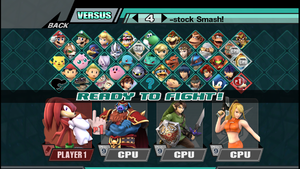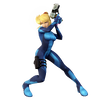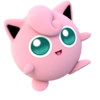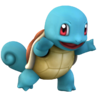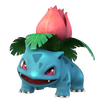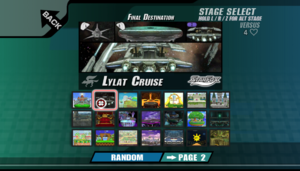| Welcome to SmashWiki! Log in or create an account and join the community, and don't forget to read this first! |
| Notices |
|---|
| The Skill parameter has been removed from Smasher infoboxes, and in its place are the new "Best historical ranking" and "Best tournament result" parameters. SmashWiki needs help adding these new parameters to Smasher infoboxes, refer to the guidelines here for what should be included in these new parameters. |
| When adding results to Smasher pages, include each tournament's entrant number in addition to the player's placement, and use the {{Trn}} template with the matching game specified. Please also fix old results on Smasher pages that do not abide to this standard. Refer to our Smasher article guidelines to see how results tables should be formatted. |
| Check out our project page for ongoing projects that SmashWiki needs help with. |
Project+
- For information on Project+'s predecessor, see Project M.
Project+ is a gameplay modification of the Brawl mod Project M (based on Legacy TE) with the aim to improve the balance among the cast by making small moveset changes to all or most characters. Project+'s development started in 2018 and version v1b was released in April 2019. On March 17, 2020, Project+ 2.0 was revealed with additional content, such as new modes, revamps to some characters movesets such as Bowser getting a new fireball attack and Charizard getting Thunder Punch, and the reveal of Knuckles the Echidna as the only new playable character beyond what Project M had.
Shortly after its initial release, Project+ received high levels of popularity among players. By April 8, 2019 Project+ 2.0 had received 100,000 downloads[1] on its primary site alone. Since its release, Project+ has become the main mod over Project M in several tournaments, most notably and recently Blacklisted 5, Low Tier City 7, and The Encore, with many majors switching from Project M over to Project+.
Changes from Project M and Legacy TE
Like the mods Project+ was based on before it, this mod focuses on improving the overall gameplay. While there are not many changes, there are some noteworthy ones.
One of these changes, which is the main focus of Project+, is the significant removal of various bugs and memory leaks featured in version 3.6 of Project M. These bugs are universal and pertain to either stages, movesets, alternate costumes, sounds, or previously outdated codes used in Project M. While there are still some bugs in the mod, they no longer impact the overall performance as easily as it did previously, thus reducing crashes and freeing a large amount of memory. Tourney mode which previously redirected to the Rotation mode due to glitches is now replaced by a debug mode.
New to the mod is the addition of more music tracks, bringing the standard to a total of over 500 songs. In addition to the music in Project M, music from other games are included in either arrangements or the original source. These include songs from Paper Mario or Pokémon Mystery Dungeon, as well as unused tracks in Brawl's files like "New Age Retro Hippie" from EarthBound. Thanks to the bug fixes and memory expansion, it is now completely possible to include music without replacing songs in the default game.
As mentioned by the team as well, most of the changes are merely aesthetic. Noticeably, the character select screen now features a new HUD, matching the theme of Project+, and includes diamond portraits. The names of the character are now completely omitted. All characters have original artwork for their select portraits, with their alternate costumes also sharing the same pose rather than having unique poses per costume, as was the case with Wario's costume in Brawl. Compared to Project M, every fighter now each has a standard of 17 costumes, with 15 in the base and two hidden skins accessible by holding R or Z.
Characters
Project+ retains the same roster as Project M, albeit with the addition of Knuckles from the Sonic the Hedgehog series. All of the characters received balance changes based on input from the competitive Project M community. Characters previously considered low tier were given better tools to help with their viability while characters previously considered high tier were nerfed to bring them closer to the rest of the cast. Additionally, certain aspects of characters deemed oppressive or frustrating by the community were balanced in an attempt to alleviate such issues while still maintaining the appeal it had to players who had used it.
The mod marks the first time where characters have had their default designs significant revamped, with two of them no longer using their given Brawl designs. The first is Samus (who design was changed to a combination of her design seen in Metroid Prime and Metroid: Samus Returns), and the second is Zero Suit Samus (who design was changed to be similar to her Other M appearance, a concept that was initiallyplanned for Project M). Many characters received a visual overhaul and major touchups to their alternate costumes in Project+: one of them is Toon Link where his Outset alternate costume was upgraded and given new shirt designs based on charts in The Legend of Zelda: The Wind Waker, and his Linebeck alternate costume receiving the shield design as seen in Phantom Hourglass. Lastly, Roy was given major polygon improvements to smooth out his armor and boots as well being given a cleaner and more red hair texture when compared to Project M 3.6's last revision.
* Characters not in Brawl
Stages
All stages from Project M 3.6 return. Some remain untouched, while others such as Metal Cavern and Castle Siege were given new layouts for tournament use. Battlefield and Final Destination have a 4th hidden alternate that accesses their appearances in the 1P Mode of the original Super Smash Bros.
In addition, along with the remaining stages from 64, Melee, and Brawl, 16 new stages have been added; they all have 3 alternate layouts or skins to choose from by holding the button shown on the stage selection screen:
- Bell Tower - A stage inspired by Generation II of the Pokémon franchise (Gold, Silver, and Crystal) as well as their Generation IV remakes. It is located in the Johto region, more specifically Ecruteak City, where players fight against the city's Gym Leader, Morty. Ho-oh appears in the background and flies in front of the signature Bell Tower, where it must be fought and captured. The stage occurs at sunset, a reference to the title screen of Pokémon HeartGold. Bell Tower has a large platform that periodically shifts to a nearby building below and then back up again. A similar concept for a Gen II Pokémon stage was actually planned for Melee, the Sprout Tower.
- Clock Town - A stage inspired by The Legend of Zelda: Majora's Mask. It is located in the game's central hub, Clock Town. In the background is the signature clock tower located in South Clock Town, where Young Link begins his journey, and behind the tower is the Moon. The stage has a custom "day and night" based on the three day cycle in Majora's Mask, in which the moon draws closer as players progress. A balloon flies every so often, and popping it plays the "secret found" jingle from the Nintendo 64 Zelda games. The cycle lasts for eight minutes, and restarts after it ends; near the end of the cycle, Skull Kid appears and causes the moon to come close to the tower.
- Cookie Country - A stage inspired by Kirby's Return to Dream Land. It is located in Cookie Country, the first level of the game, specifically the first stage of Cookie Country, where Kirby begins his journey.
- Dead Line - A stage inspired by Sonic Rush. It is located in Dead Line, the seventh zone for both Sonic and Blaze's stories. It has a swinging platform similar to Green Hill Zone, but has a much larger main platform, and four extra platforms, two on each side of the swinging platform, that periodically move around.
- Dinosaur Land - Returning from Melee, it is a renamed version of Yoshi's Island (SSBM).
- Dracula's Castle (not Dracula's Castle) - A stage inspired by the Castlevania franchise. It is located in Dracula's Castle, a frequently recurring area in the series, being the lair of the aforementioned Dracula. The version found in this game is specifically based on the castle's appearance in the Dimensional Rift stage of Castlevania Judgment. Originally in Project M, it was removed in 3.6 due to copyright concerns. It features periodically moving platforms similar to Delfino's Secret.
- Golden Temple - A stage inspired by Donkey Kong Country Returns. It is located at the Golden Temple, the ninth and final world of the game. It contains two platforms in the middle with one above the other.
- Mario Circuit - Returning from Brawl, it is renamed from Mario Circuit.
- Metroid Lab - This stage doesn't seem to be based on anything, but it bears a resemblance to the Restricted Laboratory from Metroid Fusion, which also contained Metroids in it. It uses the old Norfair layout from Project M, with two platforms that move random directions.
- Mushroom Kingdom (SSB)
- Oil Drum Alley - A stage inspired by the original Donkey Kong Country. It is located in Oil Drum Alley, the first level of the Kremkroc Industries, Inc. world, which is the fifth world of the game. It features a tall, small platform on the left and another much longer platform near it. In between those two platforms is an oil drum hazard. Additionally, on the far right of the stage, there is another platform, this being soft. A monkey will throw barrels from his platform, which can damage players.
- Poké Floats
- Rainbow Cruise
- Sky Sanctuary Zone - A stage inspired by Sonic & Knuckles. It is located on Angel Island, with it being the next zone the player goes to after Hidden Palace Zone. The stage contains two slanted platforms, with the teleporter and signpost from the game appearing in the background.
- Subspace - A stage inspired by the Great Maze in the Subspace Emissary. It is an amalgamation of the various stages where players must fight Tabuu's puppet fighters. The platforms rotate every few seconds.
- Venus Lighthouse - A new stage inspired by the Golden Sun franchise. In the first game, the Venus Tower is the final location in Isaac's quest to save Vale; the stage takes place on the very top of the tower, where the game's final boss is located. The tower can be seen breaking open with a gigantic sphere of psynergy, referencing the ending of Golden Sun where the tower has been activated. It closes after a few seconds.
- WarioWare, Inc. - The stage rewards Turbo mode when succeeding in a microgame like in Project M, and the X button can be held before selecting the stage for Brawl rewards as well.
Downloading instructions
The mod can be downloaded here.

